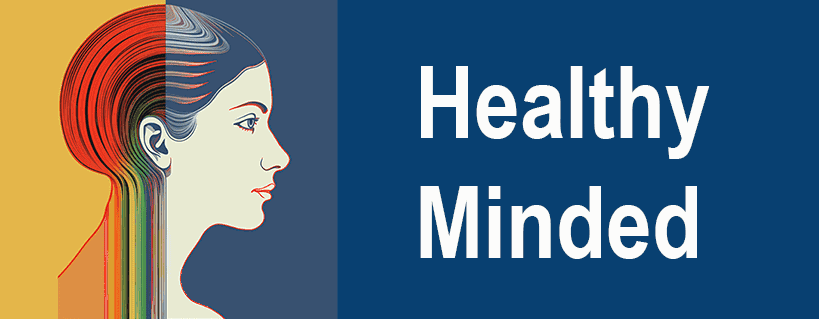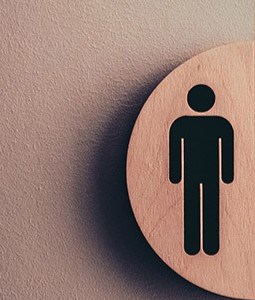While we’re all entitled to personal preferences, specific phobias are much more than a simple aversion or disinclination. A phobia can be a debilitating mental health condition, often marked by irrational fear or anxiety about an entity or situation.

Perhaps one of the most alienating phobias is the fear of men, which can complicate everything from family relationships to interpersonal dynamics in the workplace. But what exactly is the fear of men, and how is it different from garden-variety misandry?
The fear of men is called androphobia — a severe mental disorder that affects people of all ages and genders. The name comes from “Andros,” the Greek word for man, and “Phobos,” derived from the Greek god and personification of fear. Androphobia is characterized by an intense fear which can manifest in several ways. For example, people with this condition often experience anxiety or panic attacks, trembling, or other physical symptoms when interacting with a man. This is different from misandry: a hatred or prejudice against men.
Some people with androphobia may go to great lengths to avoid contact with a man, such as changing their route to work or school, so they don’t have to pass male strangers. In some cases, their fear of men can become so severe that it interferes with their ability to sleep, lead a normal life or carry out routine activities.
Try BetterHelp.com for your phobia.
15% off for Healthy Minded visitors.
Androphobia Symptoms & Diagnosis
The diagnostic and statistical manual of mental health classifies androphobia as a specific phobia, meaning that sufferers experience extreme anxiety disorder symptoms when exposed to men or male-dominated environments. Depending on a patient’s history with mental disorders, a mental health professional may classify the condition as a risk factor for substance abuse.
Symptoms of androphobia range from mild discomfort to full-blown panic attacks. Physical symptoms can include rapid heart rate, difficulty breathing, and dizziness. Unlike other anxiety disorders, an extreme fear of men can also produce cognitive symptoms that significantly affect concentration, create intrusive thoughts, and ultimately result in a constant fear of harm.
Examples of Androphobia Physical Symptoms
- Profuse sweating including in the palms. The skin can turn clammy with accompanying sensations of feverishness
- Shaking or tremors in the hands and feet, which can make it difficult to remain still even in a seated position
- Nausea or dizziness, which can be accompanied by dry mouth, vomiting or hyperventilation
Examples of Androphoiba Cognitive Symptoms
- Obsessive-compulsive thinking about the potential danger posed by men in and beyond the vicinity
- Intrusive images, fantasies or memories that cause distress
- Paranoia or defensiveness even around male figures well known to the individual (e.g. a family member, close friend or therapist)
Check out our top-rated therapy services. Healthy Minded visitors get a 15% discount.
Underlying Causes of Androphobia
Fear of men can be caused by anything from generational trauma, ongoing sexual harassment, or having witnessed specific events (e.g., violence or death). However, the leading underlying causes of androphobia are traumatic events experienced in recent memory or childhood.
Traumatic experiences
- Sexual assault or abuse can create a lasting fear of men in many victims. This is often caused by psychological manipulation or physical violence. This results in the victim feeling afraid and unsafe around men. Persistent thoughts and feelings may linger long after the incident has passed.
- Physical assault causes feelings of powerlessness, deep vulnerability, and helplessness. Victims of physical assault often experience flashbacks or nightmares about the traumatic event. They may also become irrationally convinced that similar incidents will occur in the presence of men. This makes it difficult for them to form relationships with or trust men.
Living with Androphobia
Like most phobias, the first step to overcoming the fear of men is understanding the root cause of the condition. By recognizing the origin of their fear, individuals can start to address it and make progress on managing their anxiety.
People with androphobia commonly practice relaxation techniques such as deep breathing and mindfulness meditation. These strategies help lower stress levels, reducing sensations of anxiety and fear. Using natural anxiolytic supplements is another common strategy for managing common disorder symptoms.
Most importantly, individuals should seek professional help from a therapist or counselor specializing in treating mental disorders. A trained professional can employ personalized strategies to help people manage their fear of men. With the proper support, individuals with androphobia can learn to cope with their fear and live a more fulfilling life.

Therapy & Treatment Options for Those Who Fear Men
Treating androphobia may include cognitive-behavioral therapy (CBT), psychotherapy, and prescription medications like antidepressants and selective serotonin reuptake inhibitors (SSRIs). In some cases, mental health professionals may also recommend supplements like cannabidiol (CBD) or natural nootropics as an add-on to primary courses of treatment.
- Genetics: Some people may inherit a tendency to develop anxiety disorders or phobias from their parents or other family members. This may be due to genetic variations that affect brain chemistry or nervous system functioning.
- Personality: Some people may have personality traits that make them more prone to developing phobias. For example, people who have neuroses, are introverted, or are sensitive may be more likely to experience fear and anxiety in response to certain stimuli.
Try BetterHelp.com and treat your phobia.
15% off for Healthy Minded visitors.
Exposure Therapy
Exposure therapy is a form of behavioral therapy oriented toward confronting the sources of mental health disorders. It involves gradually exposing the person to their trigger entity or environment to help them learn to cope in healthy ways and eventually overcome their particular condition(s).
Online Therapy Sessions
Known commonly as teletherapy or telehealth, online therapy sessions involve video conferencing with a licensed therapist over the internet instead of in person. During these sessions, clients discuss their mental and emotional issues with a professional who can guide them and help them work through them.
Online therapy sessions are often more convenient and accessible than in-person visits, allowing individuals who may have difficulty leaving the house (for medical or financial reasons) to access mental health care when needed most.
Cost comparison between in-person therapy & online therapy
| BetterHelp | In-person therapy |
| $60 to $90 per week (one live session per week, unlimited messaging) | $100 to $200 per session |
| $240 and $360 monthly Get 15% off for Healthy Minded visitors |
Cognitive Behavioral Therapy (CBT)
CBT is a type of psychotherapy that helps individuals identify and change negative thought patterns, behaviors, and emotions. Individuals can learn how to manage their emotions and behaviors effectively by challenging and reframing distressful thoughts.
CBT is usually conducted over weekly sessions with an accredited therapist but may also involve self-help strategies such as keeping a journal or practicing relaxation techniques.
Dialectical Behavior Therapy (DBT)
More popularly known as “talk therapy,” DBT is a type of psychotherapy initially developed to treat people with a borderline personality disorder. It combines cognitive-behavioral techniques with mindfulness and self-acceptance strategies. DBT focuses on helping individuals understand and manage their emotions, develop healthier coping skills, improve relationships, and learn to make better life choices.
- Escalaphobia: Conquering Moving Mountains, One Step at a Time - December 19, 2024
- How Psychologists Can Empower Communities - March 25, 2024
- The Potential of Medical Cannabis for Neurological Conditions - February 26, 2024

